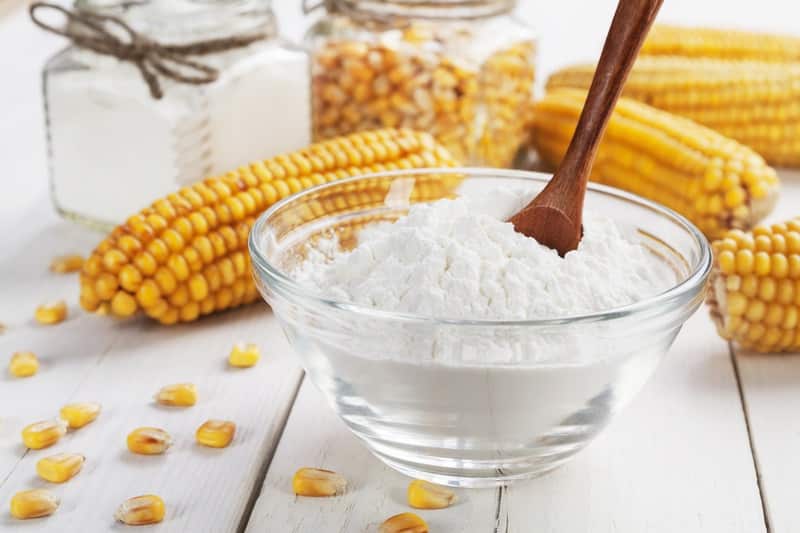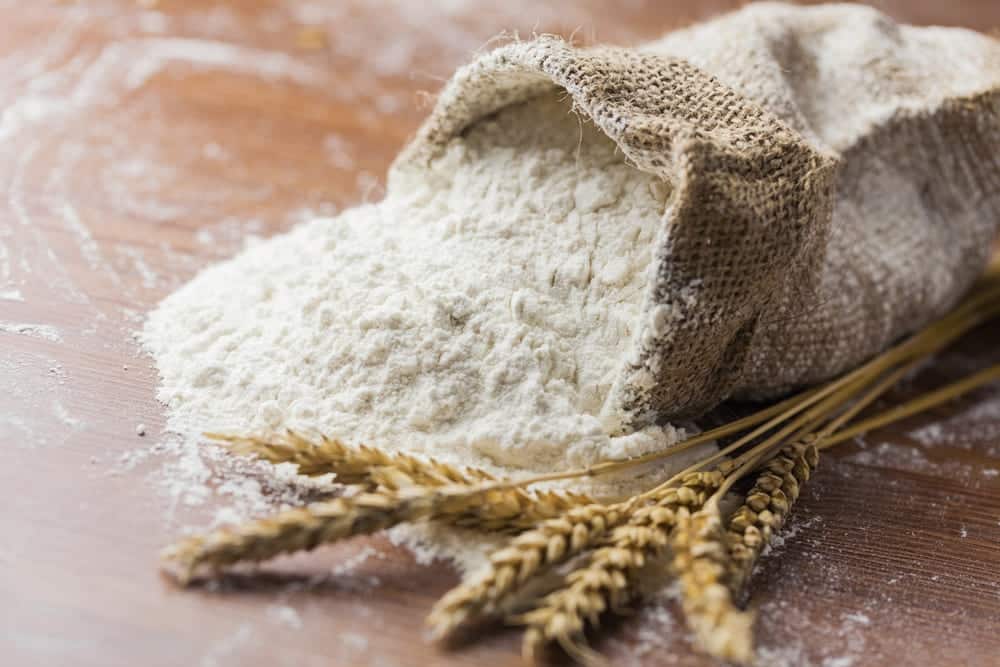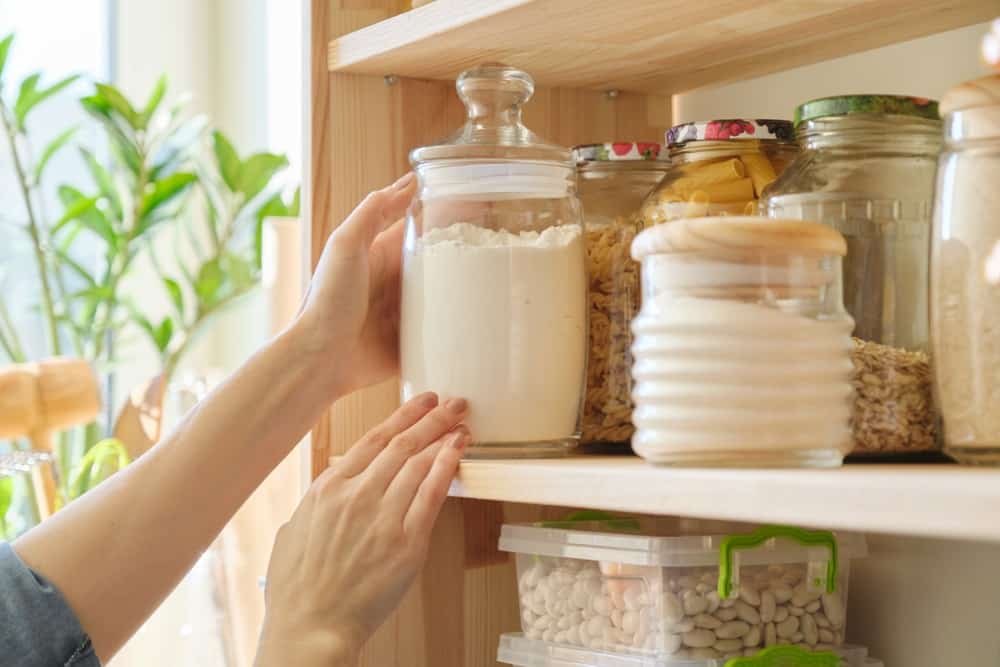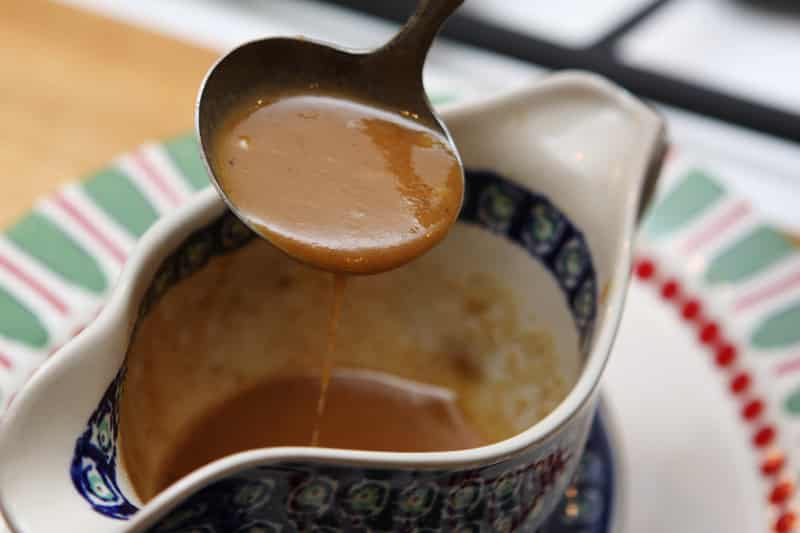
Runny foods such as soups, sauces, and gravies require thickeners to create a thicker, creamier texture.
When it comes to thickening soups and other dishes with minimal effort and without changing the taste, cornstarch is a pantry staple that can be used for both sweet and savory foods. It forms the basis for most instant soup powders, gravy powders, and custard powders.
Cornstarch can thicken any kind of liquid if used appropriately. Many people complain about cornstarch not thickening their gravies and soups well.
We’ve given you several reasons below for your cornstarch not thickening your dishes properly and have also provided some ways around this problem.
What Exactly is Cornstarch?
Cornstarch is a product made from the endosperm part of a corn kernel – this is found in the middle of the kernel. It consists mainly of starch. This is removed, cleaned, dried, and then milled until it is a fine, white powder.
The finished product is what we know as cornstarch. It has many uses in the kitchen, but today we are just going to focus on its thickening abilities.
How Does it Thicken Foods?
Cornstarch is composed of long chains of starch molecules. These unravel and increase in size when they are moistened and heated. This is called “gelatinization” and is what creates the thickening effect. It’s useful for thickening stews, gravies, soups, custards, and desserts.
Can I Just Use Ordinary Wheat Flour?
Technically, you can use any type of starch to thicken liquids – including cornstarch and flour. However, cornstarch is pure starch, while flour is only about half starch so you’ll need double the amount of flour (about two tablespoons per cup of liquid).
Also, flour takes longer to cook, so it is normally mixed into a roux (with melted fat) at the beginning of the cooking time instead of at the end, like cornstarch.
Flour tends to give the liquid a cloudy appearance, whereas cornstarch gives a clearer result. Overall, cornstarch is the thickener of choice.
Why Is Your Cornstarch Not Thickening Smoothly?
If cornstarch isn’t used correctly, it will result in food being too thick, lumpy, and “gluey” or will not thicken at all. Here are some possible reasons why your cornstarch isn’t thickening. We also provide the recommended solutions.
1. You Haven’t Mixed the Cornstarch Into a Slurry
If you add cornstarch powder directly to hot liquid such as gravy, it will form big, jelly-like lumps while the rest of the liquid will remain thin. This unpleasant texture cannot be fixed.
To prevent this from happening, it is important to make a slurry before adding the cornstarch to the hot liquid.
This means that you take a small amount of cornstarch – usually not more than a tablespoon or two depending on the recipe – and mix it in a small bowl or cup with the same amount of cold (never hot) water.
You’d normally start with a tablespoon of each. Mix this until smooth then add it, stirring constantly, to the food you want to thicken. You will end up with a smooth, thickened sauce.
As a rule of thumb, you will need one level tablespoon of cornstarch for every cupful of gravy or liquid that you want to thicken.
2. The Slurry Liquid Wasn’t Cold
You need cold water to make the slurry. Only then you may add that liquid to a simmering pan of hot liquid. Don’t use hot water to make a slurry. It will thicken in your mixing cup and will then not be able to further thicken the gravy.
To solve this problem, discard the lumpy slurry and start again with cold water and fresh cornstarch.
3. You Did Not Whisk or Stir as You Added The Slurry
If you just pour your slurry into the hot liquid without stirring, the slurry will thicken into lumps.
You need to begin stirring at the same time as you pour the slurry into the simmering liquid. Keep stirring until the liquid begins to thicken. This enables the starch molecules to disperse throughout the gravy, thickening it evenly.
4. Your Cornstarch Has Expired
Another possible reason for poor thickening results could be expired cornstarch. Make sure to use fine quality, fresh cornstarch that has been stored in an airtight container.
No-Fail Creamy Cornstarch Gravy
If you’ve become discouraged about making gravy because your cornstarch never seems to thicken properly, try this recipe.
Ingredients
- 1 cup beef or chicken stock
- 1 tablespoon butter
- 1 tablespoon cornstarch
- 60 ml full-fat milk
- ¼ teaspoon poultry or mince seasoning
- ¼ teaspoon garlic powder
- ¼ teaspoon dried thyme
- Salt and pepper to taste
Instructions
- Put the stock into a small saucepan.
- Add the butter and heat it until boiling.
- Meanwhile, mix the cornstarch and milk to make a slurry.
- Whisk this slurry into the hot liquid.
- Simmer for a minute or two till thickened.
- Add the seasonings. Taste and adjust.
Final Thoughts
Cornstarch is a great thickening agent. From alcohol to water, it can be used to thicken all kinds of liquids.
However, to get the best results, you have to use it correctly. Never add too much at once – you can always mix up another slurry and add a little more if your liquid is still too thin.



